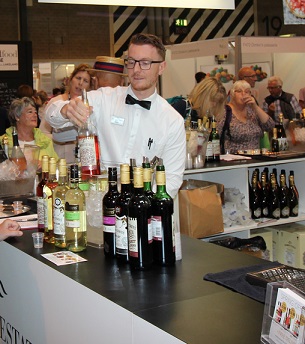Learn to Work in a Bar or Drinks Service
There are a lot of bar service courses, but most are not as extensive as this one.
- You will expand the scope and depth of drinks that you understand.
- You will have a broad and sound understanding of the products that are served in bars around the world, and how those products are managed to serve the customer.
COURSE CONTENT
This course has seven lessons as follows:
- Introduction
- Alcoholic Product orientation
- Non Alcoholic Drinks
- Service Procedures
- Mixing Drinks
- Wine Appreciation
- Establishing a Bar Service
Course Duration: 100 hours
AIMS
- Develop a broad understanding of the industry
- Be familiar with the range of alcoholic products found commonly in a bar.
- Familiarise yourself with the range of non alcoholic drinks available at bars.
- Develop an understanding of how to provide improved service to bar customers
- Develop an ability to mix a range of drinks
- Develop an understanding and appreciation of different wines.
- Consolidate skills so far developed to establish or improve the management of a bar service.
THE BAR INDUSTRY KEEPS CHANGING
 Bars come in all shapes and sizes. Some are attached to a larger establishment such as a hotel or restaurant, and others are stand alone businesses. Some focus on serving alcoholic drinks; but others provide a wider range of food and beverage services. The focus nevertheless tends to be on beverages, and in that way, a bar is essentially different to a cafe or restaurant where the focus is on supplying food service.
Bars come in all shapes and sizes. Some are attached to a larger establishment such as a hotel or restaurant, and others are stand alone businesses. Some focus on serving alcoholic drinks; but others provide a wider range of food and beverage services. The focus nevertheless tends to be on beverages, and in that way, a bar is essentially different to a cafe or restaurant where the focus is on supplying food service.
The type and quantity of beverages that people prefer to drink differs from place to place, and time to time. Bars need to be constantly adapting to meet demand in the place and time they are trading
Over the years the beverage industry like other industries is subject to trends as different products become more sought after and new products are developed. Most Westernised countries have experienced population growth over recent decades and along with that they have witnessed an increase in alcohol consumption generally. But that doesn't reveal the full picture. Some countries actually revealed a decrease in alcohol consumption between 1997 and 2011. Denmark led the way with a decrease of more than 25 litres per capita. Slovenia wasn't too far behind with a decrease of almost 20 litres per capita, although this bucked the trend for Eastern European countries where countries such as Estonia, Russia, Lithuania, Ukraine, Poland and Belarus showing the biggest per capita increases.
However, some sectors of the market have been more vibrant than others. Beer consumption seems to have been fairly stable in most Westernised countries or at best has shown a modest increase. In some countries there has been a slight decline. But this doesn't reveal the full picture. On a global level, beer is by far the most widely consumed alcoholic beverage where consumption averaged about 17.5 litres per person in 201 which is up from about 13 litres per capita in 1971. In 2011 beer was followed by wine consumption which was a distant second at 3 litres per person, and spirits which were consumed at 2.2 litres per person.
If we scrutinise beer consumption we can see that much of Eastern Europe's increase in per capita consumption can be directly attributed to beer, whereas in North America beer consumption has declined by about 4 litres per capita. If we look more closely we can see that there has been increased interest in certain sectors of the beer industry. In Canada, for instance, light, no and low alcohol beers accounted for 72.5% of beer sales in 2011. This would correlate with increased levels of health awareness amongst consumers. Strong beers at 11% accounted for the next most popular group of beers in Canada at this time. Another emergence has been the rise of craft beers. Consumers have been looking for more variety in their beers and many smaller beer makers have been able to get a foothold in the market. Of course, nothing escapes the large players in the beer and wine industry and they have been quick to buy out some of these small craft beer makers and microbreweries as well as market their own 'craft' beers.
Beers have also been developed to cater for particular groups of consumers such as women. Here, light and low alcohol beers have been successful where the emphasis has been placed on low calories. However, wine also has perceived health benefits.
On a global level wine consumption has been fairly stable from 1997 to 2015. However, it has shown signs of increased popularity in some countries. In fact wine consumption in developing markets such as China has also been rising as more people become middle class and have access to disposable
AFTER YOU GRADUATE
Some graduates may establish or buy a bar or cafe, small or large. Others may find employment in the hospitality industry, and yet others may continue their studies, formally or informally, to learn more about food service.
The options for graduates from this course are diverse and in today's world. With rapid change everywhere unforeseen opportunities may well emerge between now and when you complete your studies.
Our expert tutors stand ready to support you, discussing possibilities after you finish your course. We are here to help, not only while you are studying, but afterwards, as well.